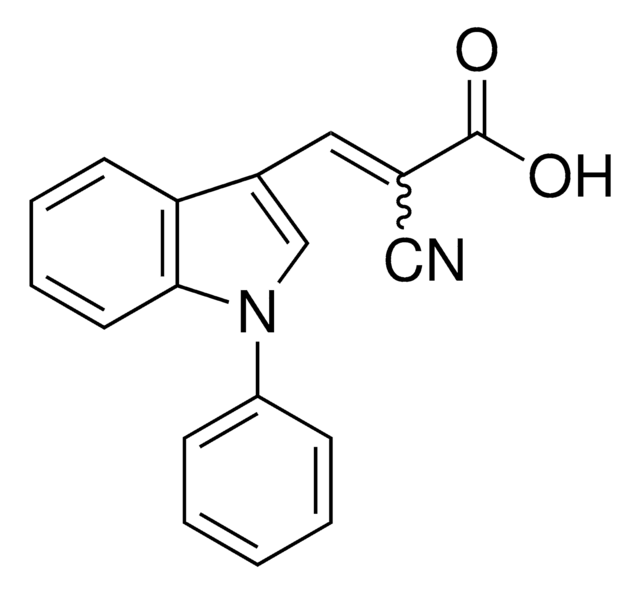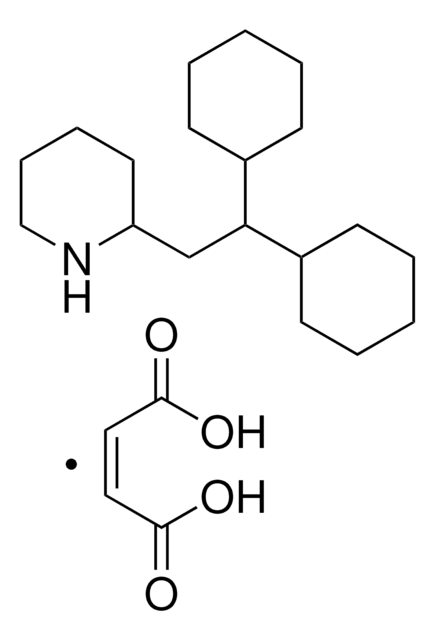PZ0160
UK-5099
≥98% (HPLC), powder, mitochondrial pyruvate carrier inhibitor
동의어(들):
2-Cyano-3-(1-phenyl-1H-indol-3-yl)-2-propenoic acid, PF-1005023
About This Item
추천 제품
product name
UK-5099, ≥98% (HPLC)
분석
≥98% (HPLC)
형태
powder
색상
yellow to tan
solubility
DMSO: >20 mg/mL
저장 온도
2-8°C
SMILES string
OC(=O)\C(=C\c1cn(-c2ccccc2)c3ccccc13)C#N
InChI
1S/C18H12N2O2/c19-11-13(18(21)22)10-14-12-20(15-6-2-1-3-7-15)17-9-5-4-8-16(14)17/h1-10,12H,(H,21,22)/b13-10+
InChI key
BIZNHCWFGNKBBZ-JLHYYAGUSA-N
애플리케이션
- as a mitochondrial pyruvate blocker to reduce pyruvate transportation into mitochondria in Roswell park memorial institute (RPMI) 1640 medium for prostatic cancer cell line culture
- in dimethyl sulfoxide (DMSO) stock, to study the effect of inhibiting pyruvate transport into mitochondria on pro-inflammatory responses in lipopolysaccharide activated macrophages
- in topical treatment in order to study its effect on hair cycle induction in experimental mice
생화학적/생리학적 작용
특징 및 장점
Storage Class Code
11 - Combustible Solids
WGK
WGK 3
Flash Point (°F)
Not applicable
Flash Point (°C)
Not applicable
시험 성적서(COA)
제품의 로트/배치 번호를 입력하여 시험 성적서(COA)을 검색하십시오. 로트 및 배치 번호는 제품 라벨에 있는 ‘로트’ 또는 ‘배치’라는 용어 뒤에서 찾을 수 있습니다.
이미 열람한 고객
관련 콘텐츠
Apoptosis, or programmed cell death (PCD), is a selective process for the removal of unnecessary, infected or transformed cells in various biological systems. As it plays a role in the homeostasis of multicellular organisms, apoptosis is tightly regulated through two principal pathways by a number of regulatory and effector molecules.
n proliferating cells, the cell cycle consists of four phases. Gap 1 (G1) is the interval between mitosis and DNA replication that is characterized by cell growth. Replication of DNA occurs during the synthesis (S) phase, which is followed by a second gap phase (G2) during which growth and preparation for cell division occurs. Together, these three stages comprise the interphase phase of the cell cycle. Interphase is followed by the mitotic (M) phase.
자사의 과학자팀은 생명 과학, 재료 과학, 화학 합성, 크로마토그래피, 분석 및 기타 많은 영역을 포함한 모든 과학 분야에 경험이 있습니다..
고객지원팀으로 연락바랍니다.












